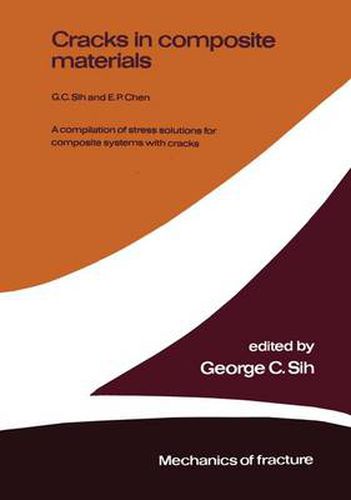Readings Newsletter
Become a Readings Member to make your shopping experience even easier.
Sign in or sign up for free!
You’re not far away from qualifying for FREE standard shipping within Australia
You’ve qualified for FREE standard shipping within Australia
The cart is loading…






This title is printed to order. This book may have been self-published. If so, we cannot guarantee the quality of the content. In the main most books will have gone through the editing process however some may not. We therefore suggest that you be aware of this before ordering this book. If in doubt check either the author or publisher’s details as we are unable to accept any returns unless they are faulty. Please contact us if you have any questions.
Composites offer great promise as light weight and strong materials for high performance structures. One of the major advantages of these materials as compared with metals is the basic way in which heterogeneity resist crack extension. In a fiber/matrix composite system, the fibers tend to cause cracks to form at closer spacing and delay the formation of a large crack. The enhancement of local failure such as fiber breaking, matrix cracking and interface debonding further reduces the energy level which might have otherwise reached the point of catastrophic failure. Even though substantial tests have been made on composite materials, little has been gained in the understanding and development of a predic tive procedure for composite failure. There are fundamental difficulties associated with incorporating the nonhomogeneous and anisotropic prop erties of the composite into the continuum mechanics analysis. Additional uncertainties arise from voids and defects that are introduced in the composite during manufacturing. Even a small quantity of mechanical imperfections can cause a marked influence on the composite strength. Moreover, the interface properties between the fibers and matrix or bonded laminae can also affect the load transmission characteristics significantly. It would be impossible to establish predictive procedures for composite failure unless realistic guidelines could be developed to control the manufacturing quality of composite systems.
$9.00 standard shipping within Australia
FREE standard shipping within Australia for orders over $100.00
Express & International shipping calculated at checkout
This title is printed to order. This book may have been self-published. If so, we cannot guarantee the quality of the content. In the main most books will have gone through the editing process however some may not. We therefore suggest that you be aware of this before ordering this book. If in doubt check either the author or publisher’s details as we are unable to accept any returns unless they are faulty. Please contact us if you have any questions.
Composites offer great promise as light weight and strong materials for high performance structures. One of the major advantages of these materials as compared with metals is the basic way in which heterogeneity resist crack extension. In a fiber/matrix composite system, the fibers tend to cause cracks to form at closer spacing and delay the formation of a large crack. The enhancement of local failure such as fiber breaking, matrix cracking and interface debonding further reduces the energy level which might have otherwise reached the point of catastrophic failure. Even though substantial tests have been made on composite materials, little has been gained in the understanding and development of a predic tive procedure for composite failure. There are fundamental difficulties associated with incorporating the nonhomogeneous and anisotropic prop erties of the composite into the continuum mechanics analysis. Additional uncertainties arise from voids and defects that are introduced in the composite during manufacturing. Even a small quantity of mechanical imperfections can cause a marked influence on the composite strength. Moreover, the interface properties between the fibers and matrix or bonded laminae can also affect the load transmission characteristics significantly. It would be impossible to establish predictive procedures for composite failure unless realistic guidelines could be developed to control the manufacturing quality of composite systems.